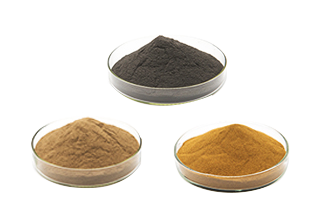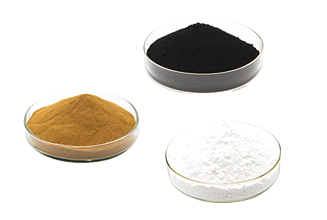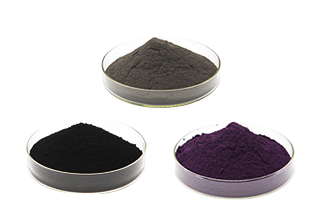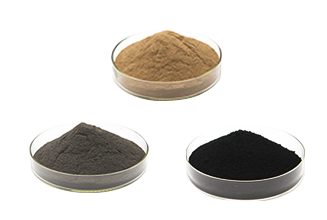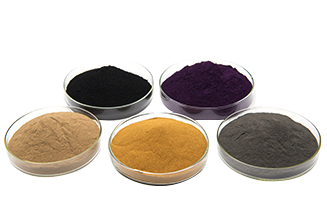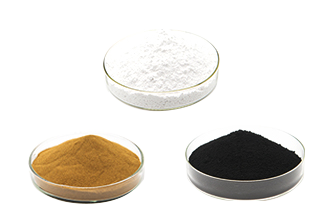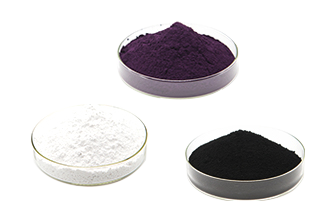news center
-
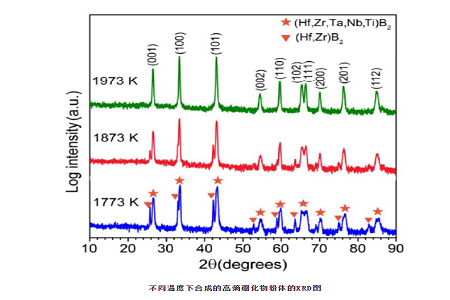 Synthesis of High-Entropy Boride PowdersThe synthesis of high-entropy boride powder generally uses five metal oxide powders as raw materials, and uses elemental boron or B4C as reducing agent to synthesize single-phase high-entropy borides through boron thermal reduction reaction or borothermal/carbothermic reduction reaction.more202202-23
Synthesis of High-Entropy Boride PowdersThe synthesis of high-entropy boride powder generally uses five metal oxide powders as raw materials, and uses elemental boron or B4C as reducing agent to synthesize single-phase high-entropy borides through boron thermal reduction reaction or borothermal/carbothermic reduction reaction.more202202-23 -
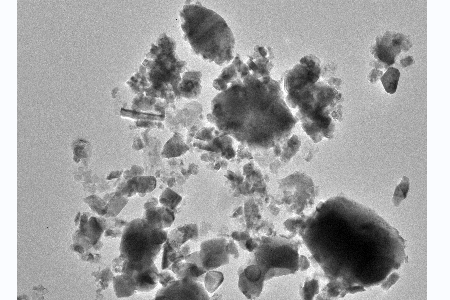 Properties and Applications of Titanium diboride(TiB2)Titanium diboride(TiB2) is a new type of ceramic material, has extremely excellent physical and chemical properties.Such as high melting point and hardness, excellent chemical stability, excellent conductive thermal conductivity and excellent mechanical properties under high temperature. TiB2 and their composite materials are widely used in aerospace, automotive, military, machinery, oil, mining, metallurgy, chemical industry, nonferrous metals and electronic electrician, etc.more202202-16
Properties and Applications of Titanium diboride(TiB2)Titanium diboride(TiB2) is a new type of ceramic material, has extremely excellent physical and chemical properties.Such as high melting point and hardness, excellent chemical stability, excellent conductive thermal conductivity and excellent mechanical properties under high temperature. TiB2 and their composite materials are widely used in aerospace, automotive, military, machinery, oil, mining, metallurgy, chemical industry, nonferrous metals and electronic electrician, etc.more202202-16 -
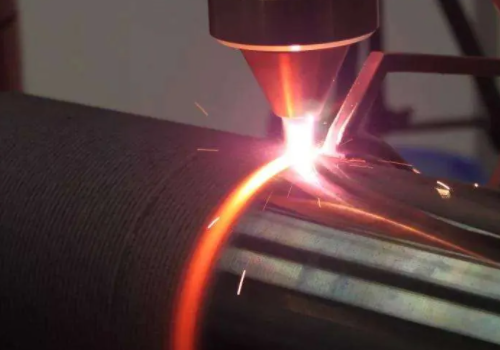 Laser Cladding Metal-Based Titanium Carbide Strengthening CoatingTitanium carbide has excellent physical and chemical properties such as low density, high strength, high elastic modulus, oxidation resistance, wear resistance and corrosion resistance, which makes titanium carbide an ideal reinforcing material. At the same time, titanium resources are abundant, easy to obtain, and cheap, so titanium carbide has been widely used in metal matrix composites. The method of laser cladding is used to prepare metal-based titanium carbide ceramic coatings on metal surfaces, which saves materials, has simple process, low cost, high coating hardness, and greatly improves oxidation resistance and wear resistance. Therefore, laser cladding metal Titanium carbide based ceramic coating has very good application value.more202201-17
Laser Cladding Metal-Based Titanium Carbide Strengthening CoatingTitanium carbide has excellent physical and chemical properties such as low density, high strength, high elastic modulus, oxidation resistance, wear resistance and corrosion resistance, which makes titanium carbide an ideal reinforcing material. At the same time, titanium resources are abundant, easy to obtain, and cheap, so titanium carbide has been widely used in metal matrix composites. The method of laser cladding is used to prepare metal-based titanium carbide ceramic coatings on metal surfaces, which saves materials, has simple process, low cost, high coating hardness, and greatly improves oxidation resistance and wear resistance. Therefore, laser cladding metal Titanium carbide based ceramic coating has very good application value.more202201-17 -
 Application of carbide ceramic materials in the field of nuclear reactorsThe service environment of nuclear materials is very harsh and needs to withstand high temperature, high pressure, high corrosiveness and high radioactivity particle beam bombardment, which puts forward higher requirements for the selection of materials. Among them, the excellent characteristics of carbide ceramics provide more possibilities for the development of nuclear carbide ceramic materials.In addition to the silicon carbide, zirconium carbide, and boron carbide described above, there are many other potential ultra-high temperature carbide materials, especially transition metal carbides, which are the material systems with the highest melting point among currently known compounds. This type of carbide includes titanium carbide (TiC), tantalum carbide (TaC) and niobium carbide (NbC).more202201-04
Application of carbide ceramic materials in the field of nuclear reactorsThe service environment of nuclear materials is very harsh and needs to withstand high temperature, high pressure, high corrosiveness and high radioactivity particle beam bombardment, which puts forward higher requirements for the selection of materials. Among them, the excellent characteristics of carbide ceramics provide more possibilities for the development of nuclear carbide ceramic materials.In addition to the silicon carbide, zirconium carbide, and boron carbide described above, there are many other potential ultra-high temperature carbide materials, especially transition metal carbides, which are the material systems with the highest melting point among currently known compounds. This type of carbide includes titanium carbide (TiC), tantalum carbide (TaC) and niobium carbide (NbC).more202201-04 -
(1).jpg) Strengthening and Toughening of Zirconium Diboride Ultra-High Temperature CeramicsSiC/ZrB2 ceramic matrix composites were prepared by hot-pressing sintering (HP) using SiC particles, SiC whiskers and SiC platelets as reinforcements, respectively. The effects of type, shape and additive amount of the SiC reinforcements on mechanical properties of the SiC/ZrB2 ceramic matrix composites were investigated. Through laminated structure design, ZrB2-based laminated ceramic matrix composites were prepared by spark plasma sintering (SPS), and the reinforcing effects of laminated structure on ZrB2-based ceramics were also discussed. The results showed that the SiC/ZrB2 ceramic matrix composites with almost full density could be prepared through adding SiC particles, whiskers or platelets by hot-pressing sintering. Compared to individual addition of SiC particles or whiskers, co-adding SiC particles and whiskers showed better toughening effects, and SiC platelets also showed better strengthening and toughening effects. Through laminated structure design, the fracture toughness of ZrB2 ceramics could be improved remarkably which shows good toughening effects.more202112-21
Strengthening and Toughening of Zirconium Diboride Ultra-High Temperature CeramicsSiC/ZrB2 ceramic matrix composites were prepared by hot-pressing sintering (HP) using SiC particles, SiC whiskers and SiC platelets as reinforcements, respectively. The effects of type, shape and additive amount of the SiC reinforcements on mechanical properties of the SiC/ZrB2 ceramic matrix composites were investigated. Through laminated structure design, ZrB2-based laminated ceramic matrix composites were prepared by spark plasma sintering (SPS), and the reinforcing effects of laminated structure on ZrB2-based ceramics were also discussed. The results showed that the SiC/ZrB2 ceramic matrix composites with almost full density could be prepared through adding SiC particles, whiskers or platelets by hot-pressing sintering. Compared to individual addition of SiC particles or whiskers, co-adding SiC particles and whiskers showed better toughening effects, and SiC platelets also showed better strengthening and toughening effects. Through laminated structure design, the fracture toughness of ZrB2 ceramics could be improved remarkably which shows good toughening effects.more202112-21 -
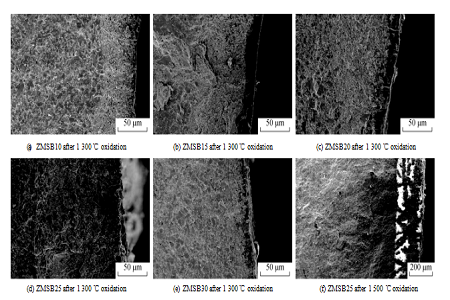 Effect of Mo–Si–B on Sintering Process and Properties of ZrB2 Ultra-high-Temperature CeramicsMo, Si and B powders were used as second phase aids to improve the fracture toughness and the oxidation resistance of ZrB2 ceramic. The dense ZrB2–Mo–Si–B ceramic composites were fabricated via hot pressing at 20 MPa and 1 900 ℃ for 1 h due to the in-situ reaction between Mo–Si–B. The flexural strength and fracture toughness of the sintered samples firstly increase, then decrease and further increase with the amount of Mo–Si–B increasing. ZrB2–20% (volume fraction) Mo–Si–B composite has the maximum fracture toughness of (5.55±0.11) MPa·m1/2. ZrB2–30%Mo–Si–B composite has the maximum bending strength of (500±40) MPa. All the sintered samples show a good oxidation resistance due to the glassy phase formed on the surface of composites, preventing the inner-transformation of oxidation.more202112-13
Effect of Mo–Si–B on Sintering Process and Properties of ZrB2 Ultra-high-Temperature CeramicsMo, Si and B powders were used as second phase aids to improve the fracture toughness and the oxidation resistance of ZrB2 ceramic. The dense ZrB2–Mo–Si–B ceramic composites were fabricated via hot pressing at 20 MPa and 1 900 ℃ for 1 h due to the in-situ reaction between Mo–Si–B. The flexural strength and fracture toughness of the sintered samples firstly increase, then decrease and further increase with the amount of Mo–Si–B increasing. ZrB2–20% (volume fraction) Mo–Si–B composite has the maximum fracture toughness of (5.55±0.11) MPa·m1/2. ZrB2–30%Mo–Si–B composite has the maximum bending strength of (500±40) MPa. All the sintered samples show a good oxidation resistance due to the glassy phase formed on the surface of composites, preventing the inner-transformation of oxidation.more202112-13

